
MSI X99A Tomahawk Review
Manufacturer: MSIUK price (as reviewed): £230.48 (inc VAT)
US price (as reviewed): $224.99 (ex Tax)
Intel's X99 chipset might have seen its last full year as the flagship desktop chipset, but there's plenty more life in it yet and even a good case for opting for a Broadwell-E CPU-based system, especially if you're after more cores (Kaby Lake looks like it will still max out at four cores and eight threads) or you need dual x16 lane PCI-E slots for two-way GPU setups.
MSI has a number of good X99 boards to its name, a recent example being the X99A Gaming Pro Carbon, which we looked at a couple of months ago.
The X99A Tomahawk is the first in a new range of 'Arsensal' gaming boards, although there appears to be a slip-up on the box as it features a Maverick missile and not a Tomahawk. Oops! Thankfully, this isn't likely to mean you're short-changed by a few hundred thousand dollars, assuming you are still interested in acquiring a motherboard and not a cruise missile.
This model is attractive from the outset thanks to its price too. At £230 it's £60 cheaper than the Pro Carbon. In fact, it's the cheapest X99 board we've looked at this year and that's without taking recent price hikes into account too which have seen all the other boards cost more in recent weeks too.
This hasn't lead to many shortcuts with the motherboard, though, and it's actually very attractive in person, with steel-plated 16x PCI-E slots and a full shroud covering the I/O ports and audio circuitry. The matt black PCB helps here too, and while there's no RGB lighting, there is at least a 4-pin RGB LED header.
Click to enlarge
You also get the full complement of overclocking tools too, with some generic power and reset buttons at the bottom of the board along with an LED POST code display and a CMOS clear button on the rear I/O panel. There's also a dual-BIOS switch too - impressive on a board at this price. The board sports an eight-phase power delivery and separate heatsinks for the VRMs and PCH. Thanks to some clever circuitry, you can use the U.2 and M.2 ports at the same time, even with a 28-lane CPU - not something all X99 boards can claim. However, if you do so, the M.2 slot will drop to x2 PCI-E speed, although we can't think of many situations you'd want to use both, unless you're trying to pair two drives in a RAID array using a U.2 adaptor.
Click to enlarge
The U.2 port is in the usual place at the edge of the PCB allowing you to mount the SSD in your case's drive mounts. However, we also like the position of the M.2 port. It's about as far south as you can get with just one of the three 16x PCI-E slots beneath it. Only two-way and three-way GPU setups will mean you can't access it. Something that's maybe not best-placed are the two 1x PCI-E slots. The first of these will be blocked by a dual-clot cooler on the graphics card above, while the second slot could restrict cooling on that graphics card too. It seems you can't have a well-placed M.2 port and 1x PCI-E slots, although realistically the audio on most X99 boards isn't likely to see many using a discrete sound card.
Click to enlarge
The spacing of the two 16x PCI-E slots is enough for a good inch of a gap between the cooler of a dual-slot card above and the PCB of the lower card, so cooling shouldn't be hampered like the X99A Gaming Pro Carbon, which clearly throttles in one or two of our gaming tests. Unlike some Asus boards we've tested recently, there's no problem accessing the primary PCI-E slot lever and there's enough space between the top heatsink and 8-pin EPS 12V port for PSU connectors with small connecting flanges on them - these are often used with some third-party cable sets.
Click to enlarge
The rear panel is fairly ordinary, but worthy of note are the Type-C and Type-A USB 3.1 (Gen 2) ports, which are powered by an ASMedia controller, plus you get two Intel Gigabit ports as well. Via MSI's Gaming LAN Manager and thanks to support for Intel LAN Teaming Technology, the Tomahawk can take advantage of certain bandwidth prioritising features for gaming, while Intel LAN Teaming Technology itself supports fault tolerance, load balancing, and link aggregation. We're guessing most people won't have more than one LAN port nearby but it's a nice feature to have nonetheless.
Click to enlarge
Specifications
- Chipset Intel X99
- Form factor ATX
- CPU support Intel Socket 2011-v3 (Broadwell-E,Haswell-E, Xeon)
- Memory support Quad-channel, 8 slots, max 128GB
- Sound 8-channel Realtek ALC1150
- Networking Intel I218LM, Intel I210AT (support Intel Teaming technology
- Ports 1 x M.2 PCI-E x4/SATA 6Gbps (up to 110mm), 1 x U.2 32Gbps, 1 x SATA Express 10Gbps, 10 x SATA 6Gbps, 1 x USB 3.1 (Gen2) Type-A, 1 x USB 3.1 (Gen2) Type-C, 8 x USB 3.0 (4 via header), 8 x USB 2.0 (4 via header), 2 x LAN, audio out, line in, mic, optical S/PDIF out
- Dimensions (mm) 305 x 244
- Extras RGB LED cable

MSI MPG Velox 100R Chassis Review
October 14 2021 | 15:04

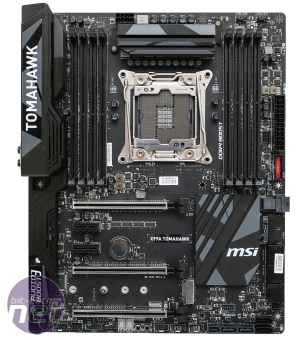

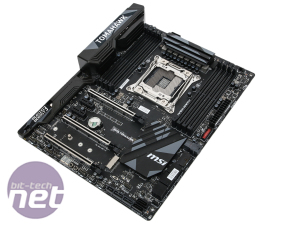
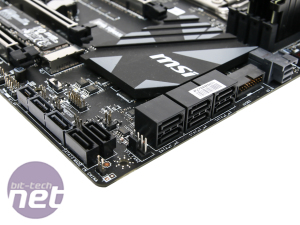
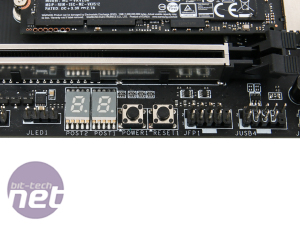
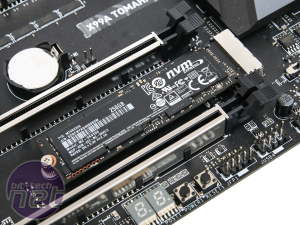
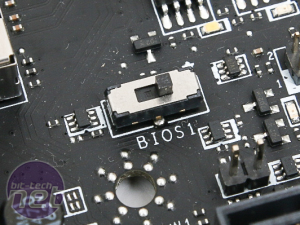
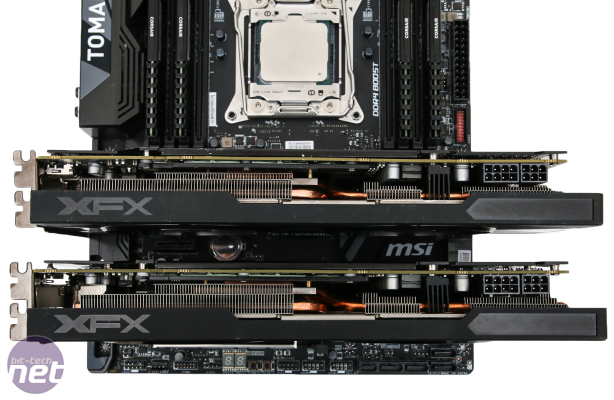
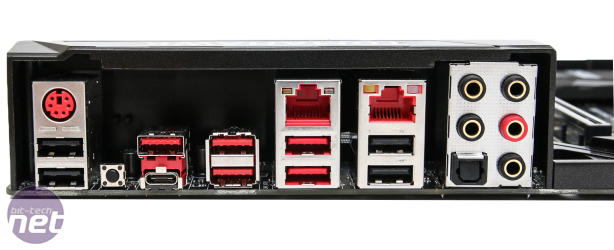







Want to comment? Please log in.